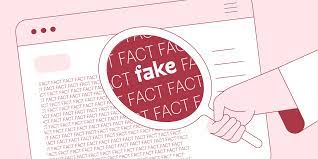Introduction
In the interconnected world of social media, the challenge of combating fake news has become increasingly complex. This article aims to dissect the multifaceted issue of misinformation, its origins, and the various strategies employed to counter its detrimental effects.
The Rise of Social Media: A Double-Edged Sword
While social media has transformed the way we access and share information, it has also become a breeding ground for misinformation. The very features that make social media powerful in disseminating information also contribute to the rapid spread of fake news.
Understanding Fake News: Types and Characteristics
Fake news comes in various forms, from deliberate disinformation to misleading headlines. Unraveling the common characteristics helps users discern credible information from deceptive content.
The Social Dynamics of Fake News
Fake news thrives on social dynamics, exploiting echo chambers and confirmation biases. Understanding how misinformation spreads within social circles is crucial in addressing its root causes.
Impact on Society: Real-world Consequences
The consequences of fake news are not confined to the digital realm. Misinformation can have tangible and far-reaching effects on individuals, communities, and even global events.
Identifying Fake News: A User’s Guide
Empowering users to identify fake news is essential. This section provides practical tips, such as fact-checking and cross-referencing, to help users navigate the sea of information responsibly.
Role of Social Media Platforms: Combating Fake News
Social media platforms play a pivotal role in addressing fake news. Evaluating their measures, from content moderation to algorithm adjustments, sheds light on their commitment to user safety.
Algorithmic Challenges: The Battle Against Virality
Algorithms, designed to enhance user experience, face challenges in distinguishing between genuine and fake content. Exploring these challenges provides insights into the ongoing battle against virality.
Fact-Checking Initiatives: Separating Truth from Fiction
Fact-checking organizations act as gatekeepers against misinformation. This section explores their role and the impact of fact-checking in curbing the spread of fake news.
Legal Measures: Addressing Misinformation
Examining the legal landscape reveals the delicate balance between freedom of expression and the need to curb misinformation. This section explores potential legal measures to tackle fake news.
Educational Programs: Promoting Media Literacy
Empowering individuals with media literacy is a proactive approach to combat misinformation. This section advocates for educational programs that equip users with the skills to critically evaluate information.
Global Perspectives: Varied Approaches to Combat Misinformation
Different countries adopt varied strategies to combat misinformation. Comparing global perspectives offers insights into the effectiveness of diverse approaches.
Psychology of Belief: Why We Fall for Fake News
Understanding the psychology behind belief in fake news is crucial. Exploring cognitive biases and social factors helps in developing targeted interventions.
Combating Fake News: Collaborative Approaches
Addressing fake news requires collaboration. Governments, tech companies, and the public must work together to create a robust defense against misinformation.
Conclusion
As we navigate the digital landscape, the battle against fake news continues. By understanding its nuances, empowering users, and fostering collaborative efforts, we can collectively build a more resilient and informed society.



